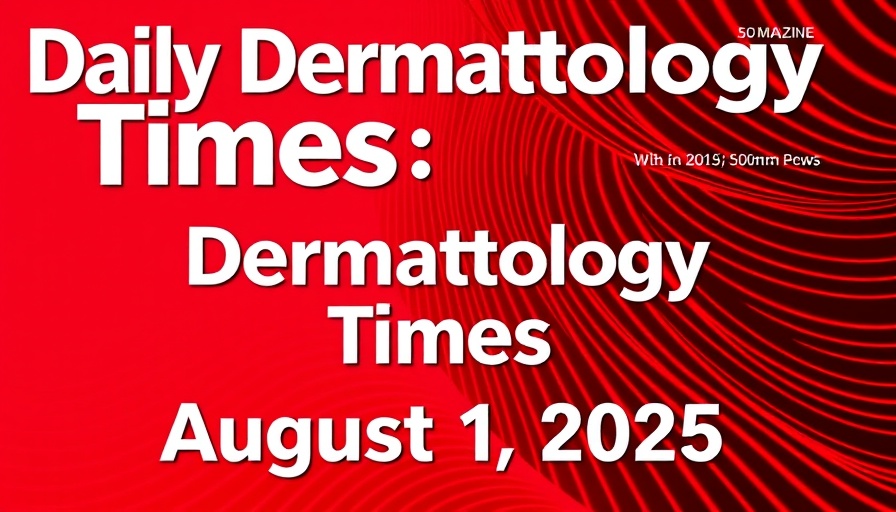
Recent Advances in Dermatology You Need to Know
August 2025 promises to be a pivotal month for dermatology enthusiasts and professionals alike. Various conferences will showcase groundbreaking advancements, offering attendees insights into the latest treatments and approaches in skin care. These events will not only highlight emerging therapies but also provide opportunities for networking and collaboration across the industry.
Revitalizing Skin Post GLP-1 Medication: The Role of Sculptra and Restylane
A recent trial by Galderma has shed light on the effective use of Sculptra and Restylane for patients experiencing skin volume loss due to GLP-1 medications. These injectable treatments demonstrated significant efficacy in restoring skin quality and boosting patient confidence. According to Dr. Michael Somenek, these strategic applications can enhance the aesthetic outcomes of individuals undergoing weight loss treatments, addressing concerns that often arise as patients navigate their health journeys.
New Insights on Atopic Dermatitis Treatments
In the realm of atopic dermatitis (AD), a new study concerning Nemolizumab is making waves. Researchers found no correlation between cutaneous reactions to the drug and baseline Eczema Area and Severity Index (EASI) scores, eosinophil counts, or IgE levels. This discovery is crucial for clinicians as it may guide prescribing practices without fear of adverse skin reactions influencing treatment outcomes.
Engaging Gen Z in Sun Protection: Introducing SPOOGE
Innovation is not limited to treatments alone; Whitney Hovenic, MD, has launched a novel product named SPOOGE that aims to engage younger individuals in sun protection methods. By combining skincare with fun and interactive elements, this approach may help bridge the adherence gap often present among the younger population, especially in an age where skin health is paramount for influencers and trendsetters.
Identifying Common Sunscreen Allergens: What to Watch For
As sunscreen use increases, so does the prevalence of allergic reactions. Dr. Kolansky has highlighted common allergens, such as oxybenzone and fragrances, as culprits that could deter individuals from using sun protection effectively. Understanding these allergens is vital, enabling consumers to make informed decisions about the products they select for their skincare routines.
The Latest Trends in Laser and Energy-Based Dermatology
Finally, Dendy Engelman, MD, FACMS, FAAD, has explored the innovations within laser and energy-based dermatological treatments. With advancements in skin resurfacing and body contouring, these therapies continue to evolve, providing more effective and safer options for patients. As these technologies improve, they open new avenues for addressing common skin concerns, leading to enhanced patient satisfaction.
Looking Ahead: What This Means for Future Skincare
As we reflect on these advancements, it's clear that the dermatology landscape is continually evolving. With research paving the way for innovative products and therapies, patients now have access to treatments that were once thought unattainable. For those navigating skincare choices, staying informed will not only help in making educated decisions but will also empower them in their skincare journeys.
In conclusion, the dermatology field's ongoing evolution offers an exciting landscape for both professionals and consumers. Keeping abreast of these advancements can enhance care and personal outcomes. For more insights on current dermatology trends and innovations, continue to follow our updates.
 Add Row
Add Row  Add
Add 




Write A Comment